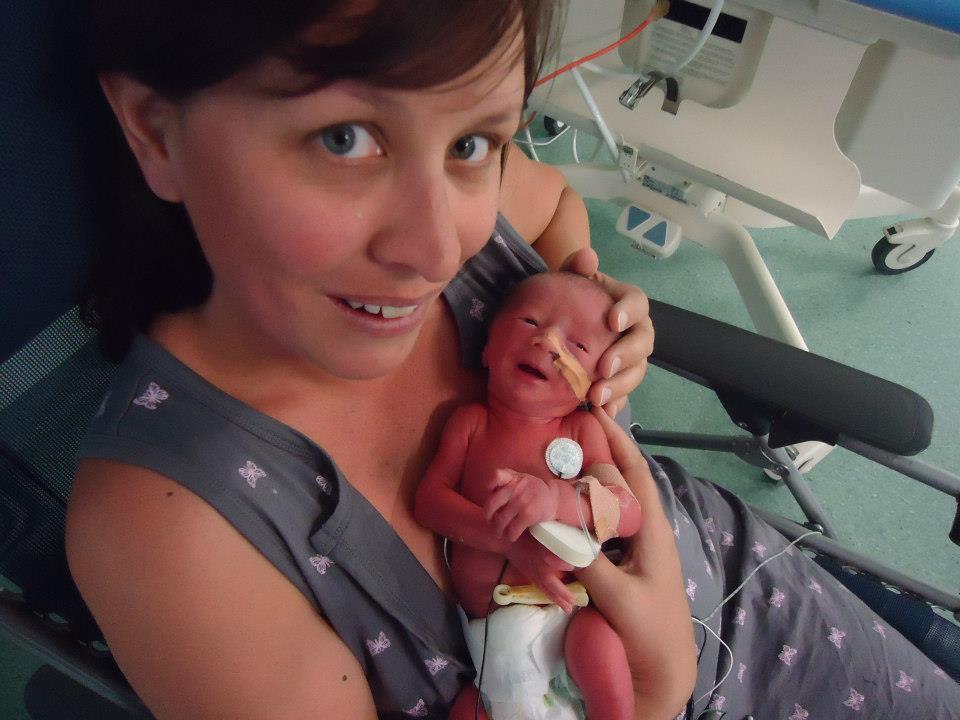Blocked milk ducts (also known as plugged or clogged milk ducts) are one of the more common issues for breastfeeding mamas. If you’ve experienced a blocked duct you're certainly not alone – around two thirds of women will be affected.
While not a serious threat to health, blocked milk ducts are usually painful which as well as really upsetting for mamas, can influence what the feeding journey looks like.
Bonnie Forbes, a nurse of 19 years, was inspired to become an Internationally Board Certified lactation consultant after working in the special care nursery and neonatal intensive care for most of her career. Watching new mamas struggling with the stress of having babies born prematurely, while navigating the challenges of breastfeeding, made Bonnie want to do more. With a nine-month-old baby, and a two-and-a-half-year-old, Bonnie has her hands full, but dedicates her working time to new mamas who need support. “I think the catalyst for becoming a lactation consultant was having my own baby. I felt after that I could genuinely offer support and advice to other women with confidence that I’d experienced the breastfeeding journey myself.”
We asked Bonnie to tell us about blocked ducts, why they happen, how to treat them, and when mamas should be reaching out for help.
What are milk ducts?
Before we can understand why blocked milk ducts occur, it may be useful to talk about what ducts are and how they work, says Bonnie.
Ducts are complex networks of thin tubes that transport milk from tiny sacs called alveoli towards the nipple. As they get closer to the nipple the ducts merge into an average of nine ducts per nipple from where milk can flow.

“A lot of the women I see are fascinated to learn that there is more than one hole from where milk comes out of the breast,” says Bonnie. “A lot of women don’t know that before they start their breastfeeding journey.”
Learn more about the anatomy of a breast.
What is a blocked milk duct?
While in former years experts believed blockages or “plugs” were the result of congealed or sticky milk, recent research suggests this is not the case.
“A blocked duct is caused by milk stasis, or a back-up of milk in the breast tissue which creates localised inflammation that results in a lump or hard area,” explains Bonnie. “So the lump associated with a blocked duct is actually inflammation, not congealed or blocked milk.”
What are symptoms of a blocked duct?
One of the tell-tale signs of a blocked duct says Bonnie is most obvious immediately after breastfeeding. “With a blocked duct there can be noticeable relief when breast milk is removed. The lump may appear smaller and feel less tender. This is in comparison to symptoms of infective mastitis which do not decrease with breastfeeding.” Read more here about signs of symptoms of mastitis.
Other common signs of a blocked duct include (but are not limited to):
- slight fever of 38.5 or less
- a palpable lump that may or may not be painful or tender*
- small white spots or blisters on the nipple.
What are common risk factors for blocked milk ducts?
While there are several common causes of a blocked duct, one of the most difficult ones for new mamas to fix alone is latching.
“If baby isn’t latching well and draining the breast adequately, this can cause blocked ducts,” says Bonnie who recommends seeking expert help if this is the case. “This is where your lactation consultant can help, but they need to see how you’re feeding as every baby and mama are different.”
Other common causes of blocked ducts include (but are not limited to):
- wearing clothes or a bra that are too tight, creating a pressure point
- continuous compressions in one area of the breast
- aggressively massaging the breast
- trauma to the breast or nipple
- an overgrowth of bacteria in your gut/microbiome
- engorgement
- delays in feeding/too long between feeds.
How do I treat a blocked milk duct?
While there are treatment methods that can provide relief, it’s crucial to remember that each situation is different. “I’d always recommend seeking individualised support for feeding - we're not all the same,” says Bonnie. “A lactation consultant – in particular a well-qualified “IBCLC” provide necessary support and advice. But as a general rule, the following tips could be useful if a blocked duct is suspected.
- try to sleep on your back when possible to avoid breast compression
- avoid underwired bras and constrictive clothing
- breastfeed on the affected breast first
- frequent unrestricted breastfeeds, 8 - 10 times in 24 hours
- if you're separated from the baby, hand or pump express to keep the milk moving
- very gentle massage from the inflammation down towards the nipple during a breastfeed
- paracetamol or ibuprofen, on discussion with your healthcare provider
- a warm shower or applying a warm washer on the whole breast for 1-2 minutes before a feed.
Lactamo can also help mamas experiencing the pain and stress of blocked milk ducts. Gently warmed in a cup of hot water, Lactamo can be used to gently massage the breast tissue to encourage relief from symptoms associated with engorgement, blocked ducts, mastitis and more. Read more here about how Lactamo can assist your breastfeeding journey.
Overall health advice recommends seeking advice from a lactation consultant, child and family health nurse, or GP if symptoms persist for more than 12 hours.
Can a blocked duct cause mastitis?
Using the techniques above many women may be able to resolve a blocked duct without medical help. However, if left untreated a blocked duct may develop into inflammatory or infective mastitis. Read more about mastitis here.
“While a blocked duct can be painful, it doesn’t cause the high fevers, body aches, headaches and feeling of being really unwell that mastitis does,” says Bonnie. “If left untreated, mastitis can be serious.”
If your symptoms persist or are not improving with conservative treatment see your GP. Read more here about causes, prevention and treatment.
Where can I find support and help?
Lactation Consultants of Australia and New Zealand can help you find a lactation consultant near you.
Ask your GP, midwife, obstetrician, or healthcare provider to connect you with a lactation consultant locally.
The Australian Breastfeeding Association have many resources available including a 24-hour helpline for new mamas, face-to-face workshops, and online classes.
*Note: while lumps in breast tissue may commonly occur as part of breastfeeding, not all breast lumps are breastfeeding related. This blog provides general information and is not intended as a substitute for medical advice, diagnosis or treatment. If your symptoms persist or worsen, or if you are in doubt, always consult your healthcare professional.






